1930s
The Beauty Queen of Neptune
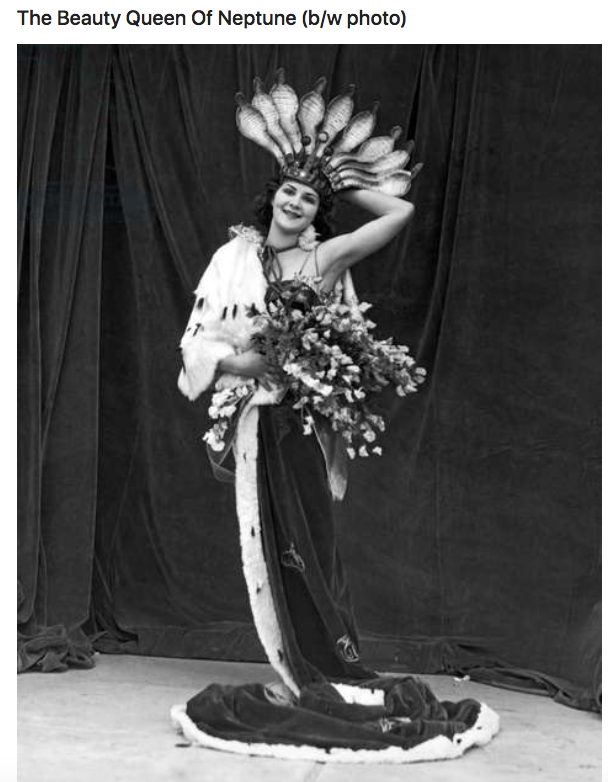
Long Beach, California: 1936. The queen of the Neptunes Electrical Extravaganza which will be staged over the Olympic Rowing Course on May 6th in Long Beach.

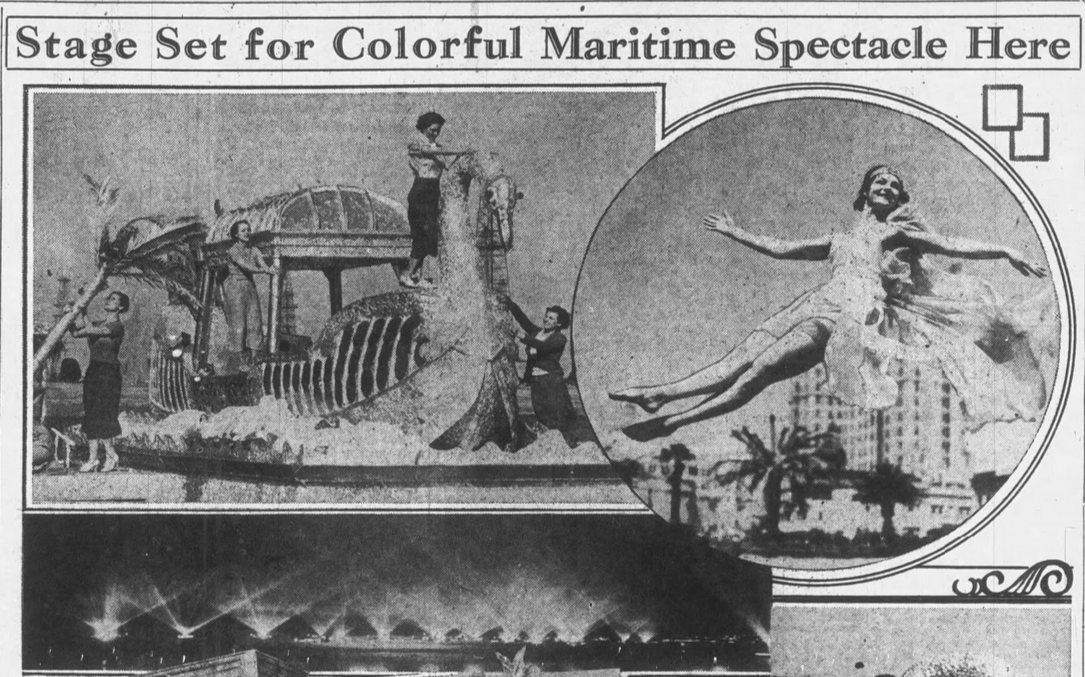
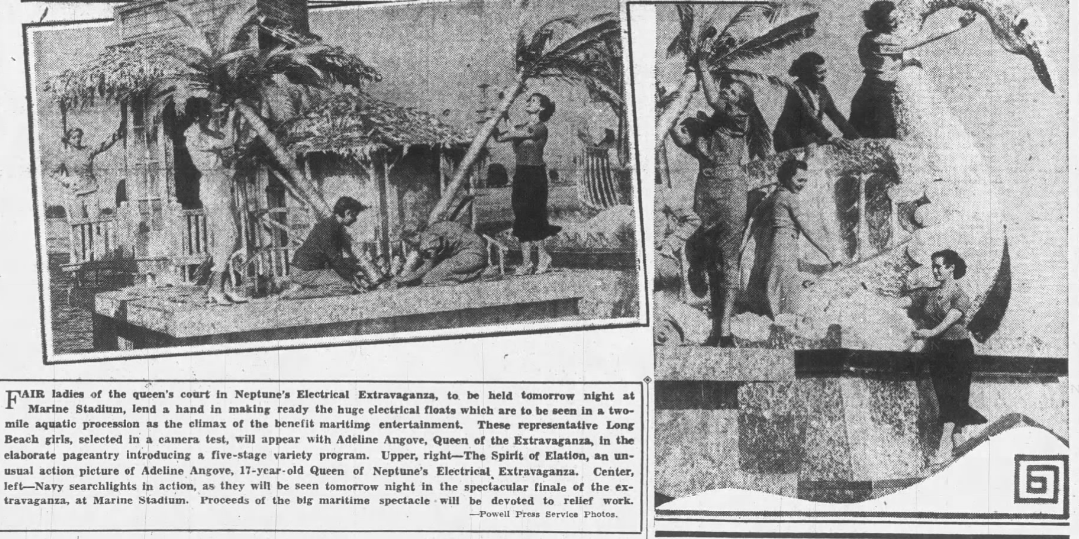

Posted By: Paul - Sun Dec 11, 2022 -
Comments (0)
Category: Awards, Prizes, Competitions and Contests, Beauty, Ugliness and Other Aesthetic Issues, Oceans and Maritime Pursuits, Parades and Festivals, 1930s
Trapdoor for bank tellers
I'm aware of quite a few inventions designed to trap or incapacitate bank robbers. But the idea of allowing a bank teller to abruptly vanish is more novel.Of course, this approach could only work if there was a single teller working, and hopefully no other customers in the bank.
I was curious whether this bank with the cashier trapdoor might still exist, but I had no luck finding its address. I did find that it was acquired by another bank in 1948. So it was probably demolished long ago.

Hagerstown Morning Herald - Aug 9, 1932
Posted By: Alex - Mon Nov 28, 2022 -
Comments (0)
Category: Crime, Inventions, Money, 1930s
Signorina Grandi Firme
Le Grandi Firme (The Great Signatures) was an Italian literary magazine published as a fortnightly review from 1924 to 1936, and as a weekly review from 1937 to 1938. The weekly edition featured cover artwork by Gino Boccasile that always depicted an attractive young woman in a tight dress. These cover women became known as the "Signorine Grandi Firme."
The Signorine Grandi Firme became so popular that they inspired a national beauty contest to find a real-life "Signorina Grandi Firme," or Miss Grandi Firme. This was one of Italy's first beauty contests. It was won by 19-year-old Barbara Nardi.
Unfortunately I haven't been able to find any photos of Barbara Nardi, even though she went on to appear in a number of Italian movies.

Soon after the contest, Mussolini ordered the magazine to cease publication. Apparently he found its popularity to be a threat.

The beauty contest also inspired a swing song, Signorina Grandi Firme, sung by Carlo Moreno and the Trio Lescano.
More info: listal.com, MissItalia.it
Update: Paul succeeded in finding a photo of Barbara Nardi in an old Italian film magazine.

"The beautiful smile of Barbara Nardi"
Cinema - Apr 23, 1940
Posted By: Alex - Thu Nov 10, 2022 -
Comments (3)
Category: Awards, Prizes, Competitions and Contests, 1930s
Farmer of the Future

Posted By: Alex - Sat Oct 22, 2022 -
Comments (3)
Category: Farming, 1930s, Yesterday’s Tomorrows
Jane’s skin didn’t pass the love test
Jane didn't use Lux Toilet Soap. So she was doomed to be forever alone.Previously posted: Lux ads about "undie odor" and gossiping underwear. During the 1930s and 40s, Lux Soap specialized in ads designed to terrify women into buying its products.

San Francisco Examiner - June 18, 1939
Posted By: Alex - Fri Oct 07, 2022 -
Comments (0)
Category: Advertising, Baths, Showers and Other Cleansing Methods, 1930s, Love & Romance
The Water Unicycle
Full patent here.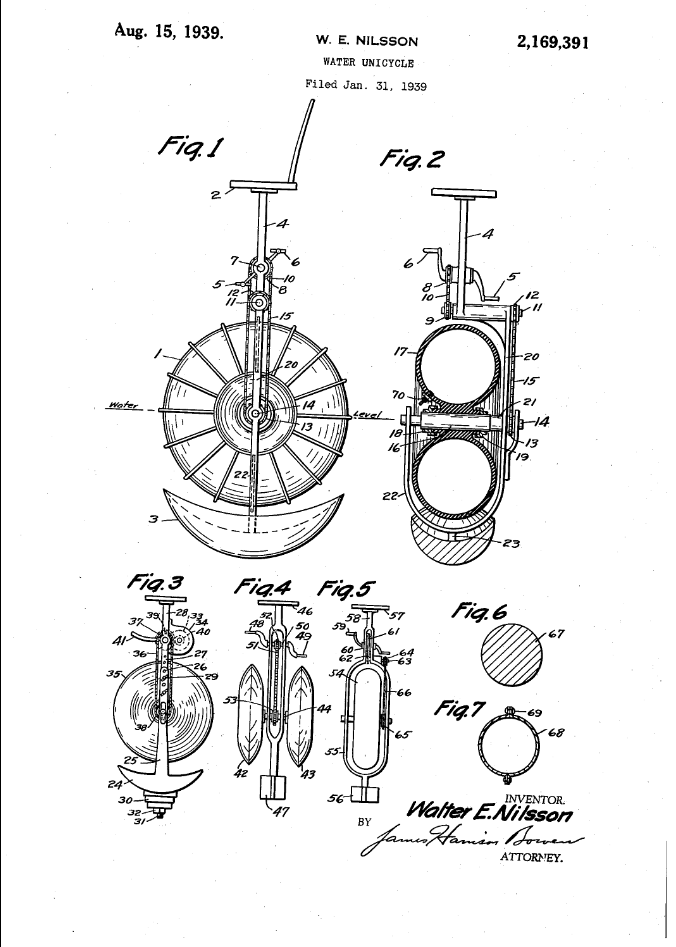
POPULAR MECHANICS source.
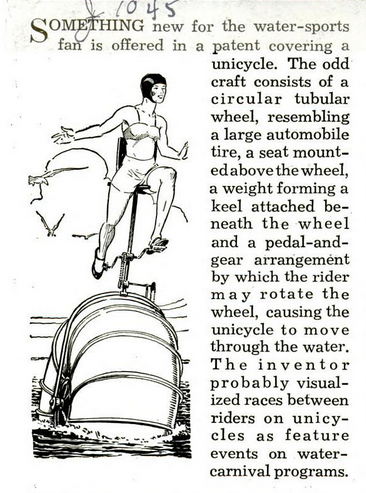
Posted By: Paul - Sat Oct 01, 2022 -
Comments (0)
Category: Inventions, Chindogu, Patents, Oceans and Maritime Pursuits, Ridiculousness, Foolishness, Public Ridicule, Silliness, Goofiness and Dumb-looking, 1930s, 1940s
Would-Be Test-Tube Mothers of the 1930s
1939: Having filed for divorce from her husband, Mrs. Virginia Cleary announced that she was seeking a "perfect specimen of manhood" in order to father a "test tube" baby with her. Never mind that the technology for this didn't exist, and wouldn't for another four decades.She consulted with a doctor to determine what qualities the father of her "eugenic baby" would need to have:
- Between 28 and 32 years of age;
- Athletic in type, preferably light-haired;
- Unmarried, good habits, moderate in smoking and drinking;
- Strong, well-formed features;
- Strong personality, good ancestral background;
- Weight between 160 and 175 pounds.


San Francisco Examiner - Apr 26, 1939
Inspired by the example of Mrs. Cleary, Jean Gordon came forward and announced that she too wanted to mother a "test tube baby."

Des Moines Tribune - Apr 28, 1939
Posted By: Alex - Sun Sep 25, 2022 -
Comments (5)
Category: Babies, 1930s
The New Eyelashes

Posted By: Alex - Wed Sep 21, 2022 -
Comments (0)
Category: Fashion, 1930s, Eyes and Vision
5000 Hedgehogs Needed
I do not believe this mystery has ever been definitively solved.Source of first clipping: The Guardian (London, Greater London, England) 07 Oct 1935, Mon Page 7
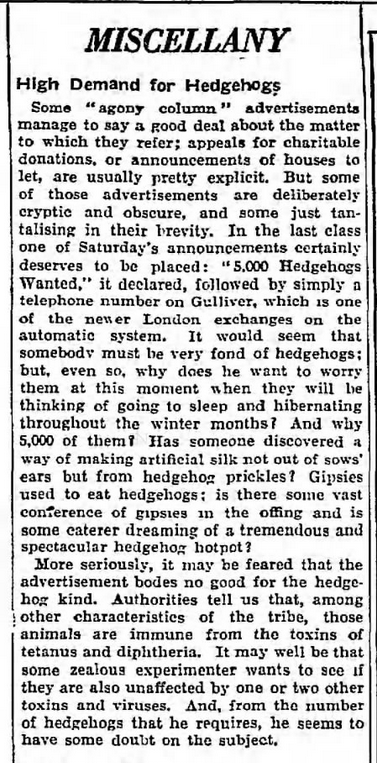
Source of second clipping: The Guardian (London, Greater London, England) 09 Oct 1935, Wed Page 9
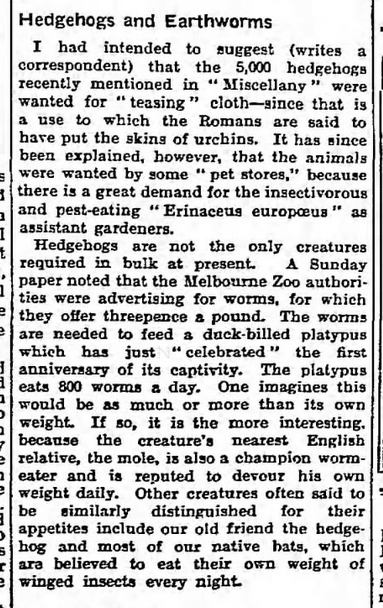
Source of third clipping: Western Morning News (Plymouth, Devon, England) 05 Jan 1937, Tue Page 4
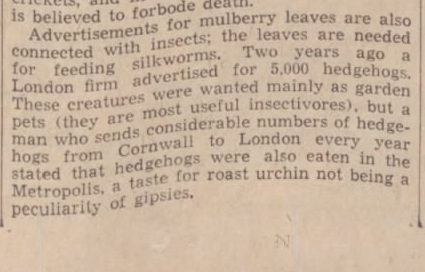
Posted By: Paul - Fri Sep 09, 2022 -
Comments (1)
Category: Animals, Unsolved Mysteries, 1930s, United Kingdom
Watch out for falling babies
While Joseph Figlock was walking down the street, minding his own business, he twice had a baby fall from an overhead window onto his head. It first happened in 1937, and then again in 1938.Bad luck for him, but good luck for the kids who landed on him.

Detroit Free Press - Sep 28, 1938
Posted By: Alex - Sun Sep 04, 2022 -
Comments (2)
Category: Babies, Synchronicity and Coincidence, 1930s

| Who We Are |
|---|
| Alex Boese Alex is the creator and curator of the Museum of Hoaxes. He's also the author of various weird, non-fiction, science-themed books such as Elephants on Acid and Psychedelic Apes. Paul Di Filippo Paul has been paid to put weird ideas into fictional form for over thirty years, in his career as a noted science fiction writer. He has recently begun blogging on many curious topics with three fellow writers at The Inferior 4+1. Contact Us |




